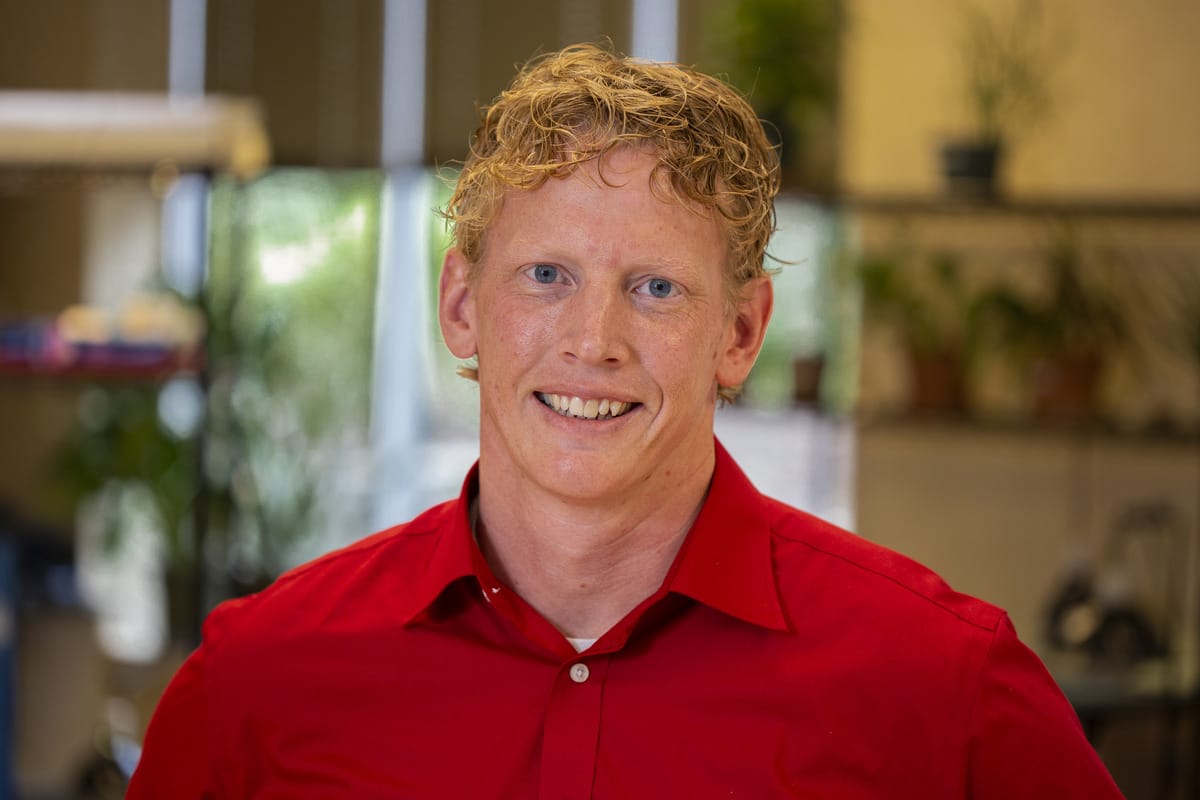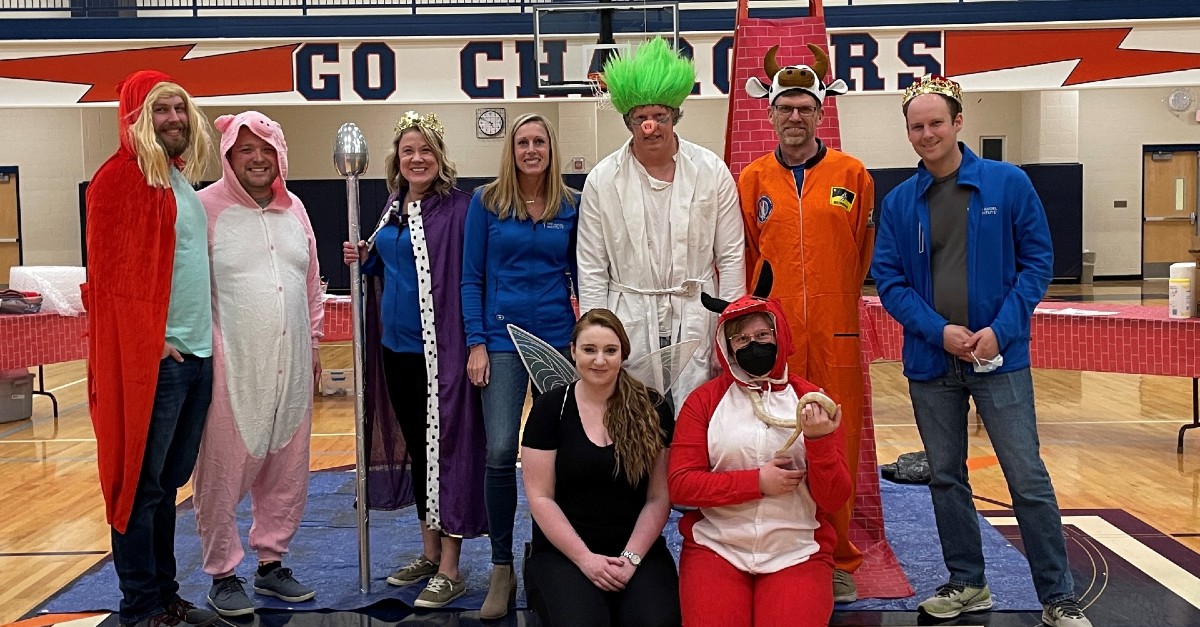The secretary was a little nervous, I could tell. A strange man was hobbling up the stairs. His shirt was torn. He had green marker drawn all over his face — in fact, his ears were completely covered in green. She eyed him warily as he approached her desk; she reached for the button to call security.
“Hello,” he said. “I’m with the Van Andel Institute. I’m here for the Curiosity on Wheels event this evening. I was hoping you could help point me to where my colleagues and I could set up.”
That weirdo was me — and the Curiosity on Wheels event was AWESOME. After figuring out where we should set up, I put on a green troll wig and a pig nose to complete my troll costume. My fellow little pigs and fairy queens and Little Red Riding Hoods hosted dozens of excited children as they explored Fairy Tales Gone STEAM: engineering a bridge to help the billy goats cross. Building houses the Big Bad Wolf couldn’t blow down — not even with a superpowered leaf blower. Helping Humpty Dumpty survive his great fall. There were smiles and cheers; students became engrossed in their creations as they revised and refined their ideas. There was learning afoot.
Bring Weirdness to the Classroom
If you’re reading this, the chances are that you’re a teacher — and as such, you’ve likely seen some really, really weird stuff. The kid who was breeding snails in his desk. The one who pretended to be a cat, and stayed in character all spring. The one who was way, way too possessive of a pencil, who cried about the Peloponnesian War, or who wanted to find out what the doorknob tasted like.
Most of us have a tendency to do the metaphorical equivalent of reaching for the security button when we see weirdness. But our world desperately needs weirdness. By definition, every act of progress — every innovation or act of creativity — is strange. Different. Not normal.
The kid tasting the doorknob might need a lesson about hygiene, but our world needs to capitalize on that natural curiosity. The Peloponnesian War protestor might need a lesson on how to scale the problem, but that hyperpowered sense of empathy could be an incredible force for good. With the right nurture, the snail-breeder could become a great scientist.
Weirdness is wonderful; what can teachers do to keep kids weird?
Weird the Conversation
Sometimes, it’s as simple as the words we use. I never tell students that it’s “okay” to be weird. That phrasing carries a certain connotation — that weirdness is something to be tolerated, rather than something to be celebrated. Better to say that weirdness is awesome — that weirdness is stupendous and outstanding and marvelous.
A subtle shift in the conversation can change the entire culture of a classroom, from a place that implicitly values conformity to a community that celebrates creativity.
Assign Weird
Set the tone by having some weird learning tasks of your own — it can be a great way to spark curiosity and critical thinking, and to deepen engagement. Wouldyourathermath.com has some great examples — would you rather have two hundred dollars, or a stack of quarters six feet tall? It’s a weird question, but a query that creates rich mathematical dialogue.
Or, try Square Pegging. Select random subjects and predicates, and use them to launch creative writing exercises — or just wild and weird conversations. For instance, “How could a zebra inspire a nation?” or “How could a lemon trick your teacher?” (If you’re You can get your own square pegs here. Or, you can try a similar exercise with the Analogic Thinking Generator.”
Live Weird, My Friends
Of course, you have your own authentic ways to inject weirdness into your classroom — to show students that you celebrate differences and diversity of all types. I’d love to hear your own weird ideas! Reach out to me on Twitter or send me an email. I’d love to hear the weird and wonderful ways you inspire oddity in your classroom!

